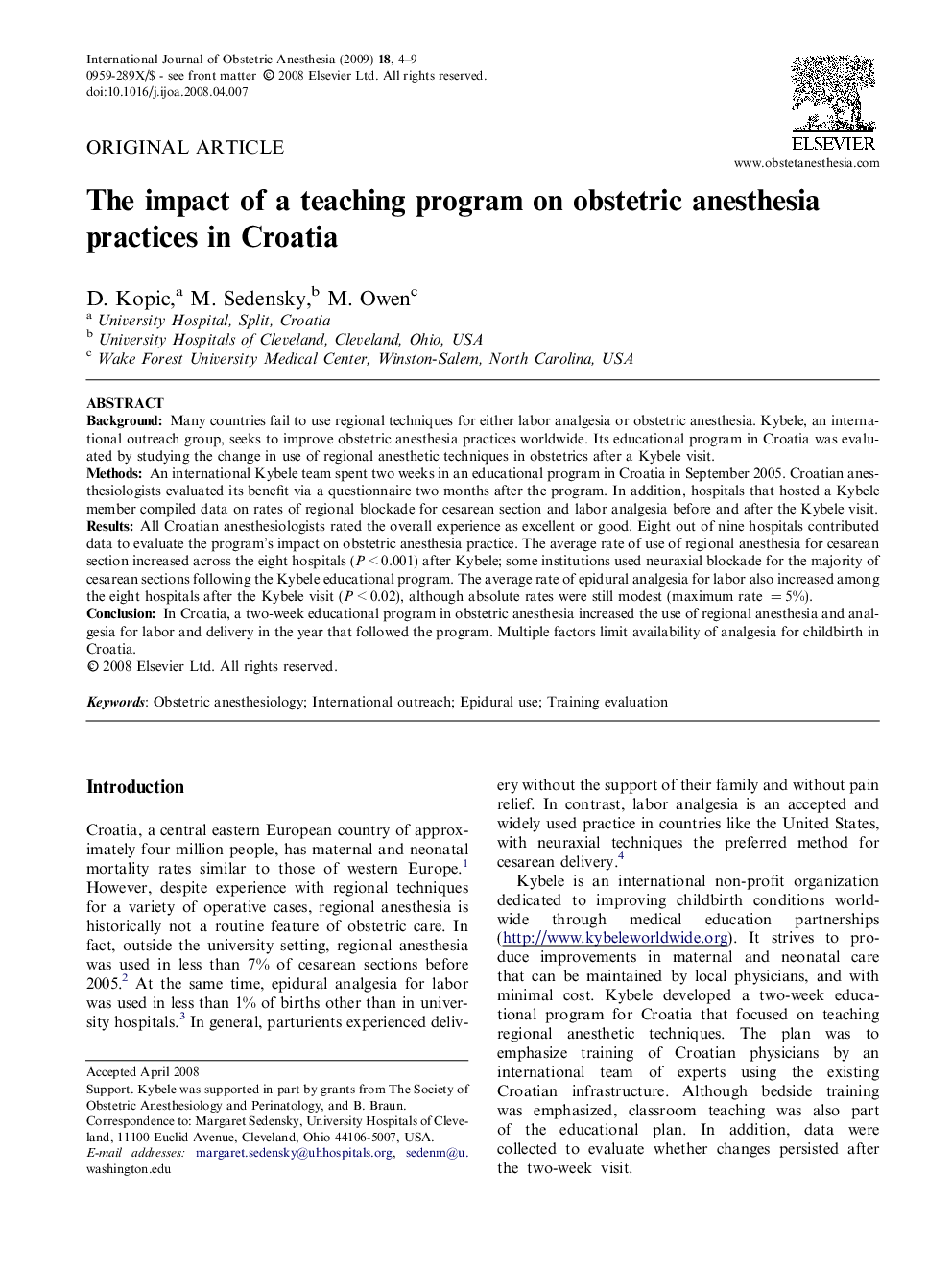| Article ID | Journal | Published Year | Pages | File Type |
|---|---|---|---|---|
| 2758620 | International Journal of Obstetric Anesthesia | 2009 | 6 Pages |
BackgroundMany countries fail to use regional techniques for either labor analgesia or obstetric anesthesia. Kybele, an international outreach group, seeks to improve obstetric anesthesia practices worldwide. Its educational program in Croatia was evaluated by studying the change in use of regional anesthetic techniques in obstetrics after a Kybele visit.MethodsAn international Kybele team spent two weeks in an educational program in Croatia in September 2005. Croatian anesthesiologists evaluated its benefit via a questionnaire two months after the program. In addition, hospitals that hosted a Kybele member compiled data on rates of regional blockade for cesarean section and labor analgesia before and after the Kybele visit.ResultsAll Croatian anesthesiologists rated the overall experience as excellent or good. Eight out of nine hospitals contributed data to evaluate the program’s impact on obstetric anesthesia practice. The average rate of use of regional anesthesia for cesarean section increased across the eight hospitals (P < 0.001) after Kybele; some institutions used neuraxial blockade for the majority of cesarean sections following the Kybele educational program. The average rate of epidural analgesia for labor also increased among the eight hospitals after the Kybele visit (P < 0.02), although absolute rates were still modest (maximum rate = 5%).ConclusionIn Croatia, a two-week educational program in obstetric anesthesia increased the use of regional anesthesia and analgesia for labor and delivery in the year that followed the program. Multiple factors limit availability of analgesia for childbirth in Croatia.
